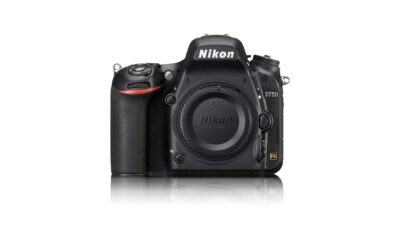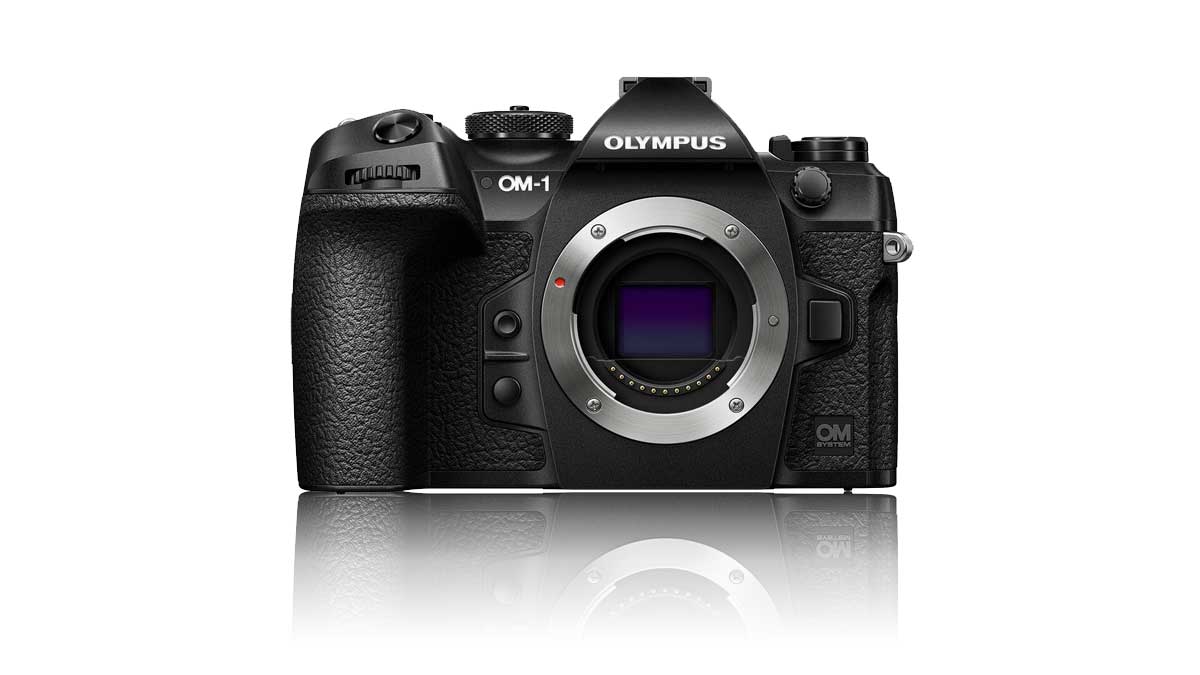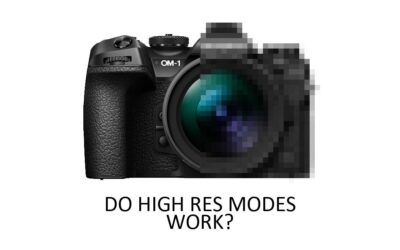Full Frame Cameras are often presented as the pinnacle of the upgrade path, the ultimate camera system for enthusiasts and professionals alike.
However, having shot with a Full-Frame camera for years, I recently purchased a smaller and lighter Micro Four Thirds Camera, and I enjoyed the experience so much that I stopped using my Full Frame camera altogether. Here’s why. Jump to Conclusion.
Shop Full Frame Cameras



What are Full-Frame Cameras
Full Frame describes cameras featuring an image sensor sized to match a frame of 35mm film. Specifically, a Full Frame sensor measures 36mm across by 24mm high.
Full Frame Cameras vs APS-C
Full Frame camera sensors are more than twice as large as APS-C sensors. As a result, assuming all other things are equal, a Full Frame sensor captures more than twice the light resulting in superior image quality. However, a smaller sensor usually means smaller, more affordable cameras and lenses.
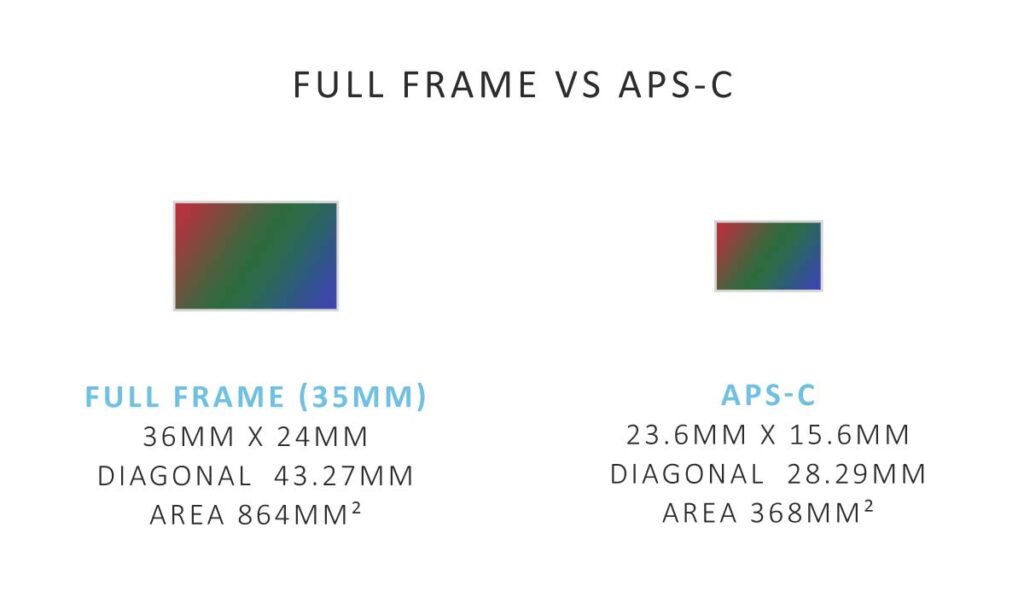
Full Frame Cameras vs Micro Four Thirds
A Full Frame sensor is four times larger than a Micro Four Thirds sensor. Therefore, a Full Frame camera has the potential to gather up to four times more light per exposure than a Micro Four Thirds camera, resulting in superior noise control and dynamic range.
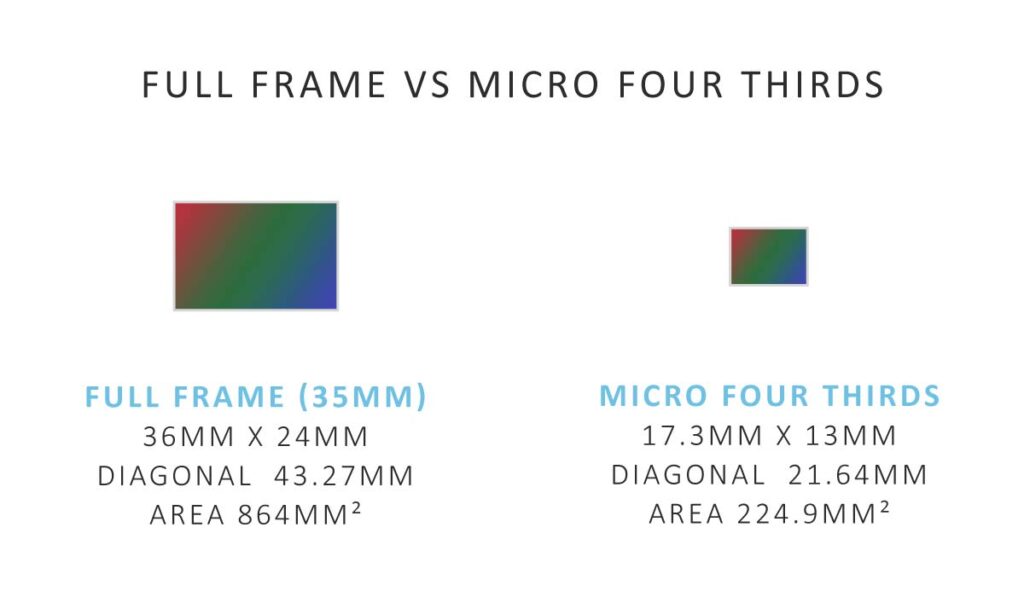
Nevertheless, Micro Four Thirds cameras combine supreme versatility and compact size. As a result, Micro Four Thirds cameras are popular for travel and wildlife photography.
Benefits of Full Frame Cameras
Broadly speaking, Full Frame Cameras have two benefits. First, the potential for superior image quality, and second, better background blur.
1. Image Quality
Because Full Frame Cameras feature a larger image sensor than most, they capture more light, like a wide bucket captures more rainwater than a smaller bucket. Since light directly translates into image quality, Full Frame cameras can offer improved Dynamic Range, less noise, and superior resolution.
Dynamic Range
Full Frame cameras can capture up to 14EV worth of Dynamic Range. As a result, you can expand the distance between your image’s darkest and brightest pixels, making it much easier to photograph high-contrast scenes such as sunsets.
But to truly exploit a Full Frame Camera’s dynamic range, you must be prepared to shoot Raw and edit your photos.
Less Noise
Full Frame Sensors capture more light than smaller sensors resulting in a more favorable Signal-to-Noise Ratio. This is hugely advantageous when shooting handheld in scarcely-lit environments or using fast, light-starved shutter speeds to capture sharp images of moving subjects.
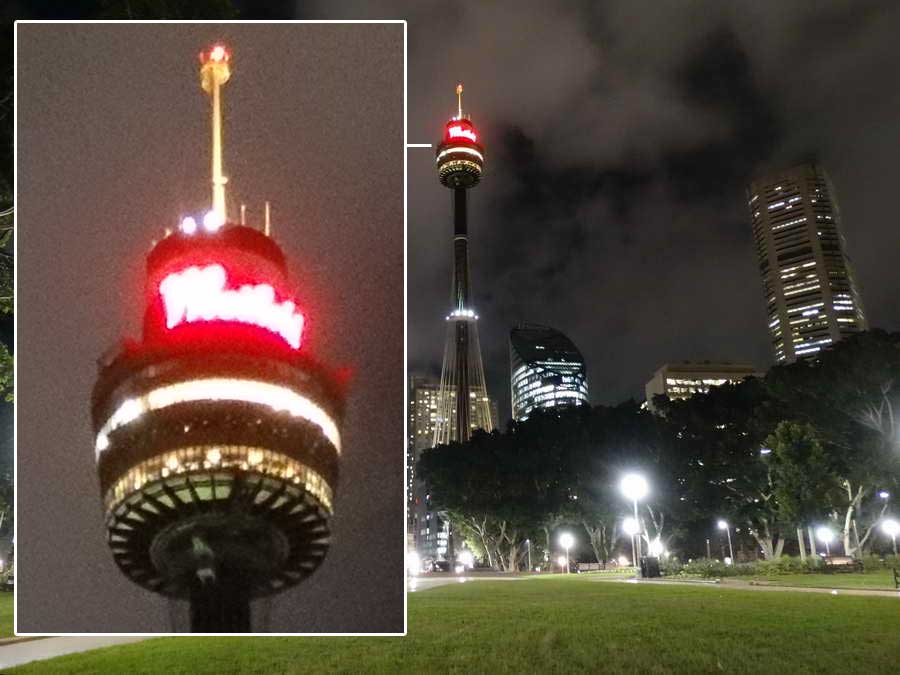
High Resolution
Full Frame Sensors are larger than most and, thus, offer additional room for more photosites – and more photo sites equal more megapixels. For instance, Full Frame cameras currently top out at 61 Megapixels, whereas APS-C sensors are limited to 40 Megapixels.

As a result, Full Frame cameras have the potential to capture more detail while offering more headway for cropping.
2. Background Blur
Full Frame Cameras are a good option if you’re looking to blur backgrounds. This is because the Full Frame camera’s larger sensor demands longer focal lengths to achieve the same angle of view as a camera with a smaller sensor.

For instance, a 50mm lens on a Full Frame camera produces a similar 47-degree angle of view as a 25mm lens for Micro Four Thirds. However, the 50mm has better background blur because 50mm is a longer focal length than 25mm.
The Disadvantages of Full Frame Cameras
Full Frame cameras are typically larger, heavier, and more expensive than their APS-C or Micro Four Thirds equivalents, particularly when factoring lenses. And despite the cost and bulk, it’s not always possible the exploit the benefits of Full Frame Cameras.
Size and Weight
Full Frame Cameras are not always much bigger than cameras with smaller sensors. But thanks to the larger sensor, Full Frame Cameras require larger and heavier lenses. This is particularly true at longer focal lengths where a Full Frame camera needs a 300mm lens to achieve the same angle-of-view as a comparatively tiny 150mm lens on Micro Four Thirds.
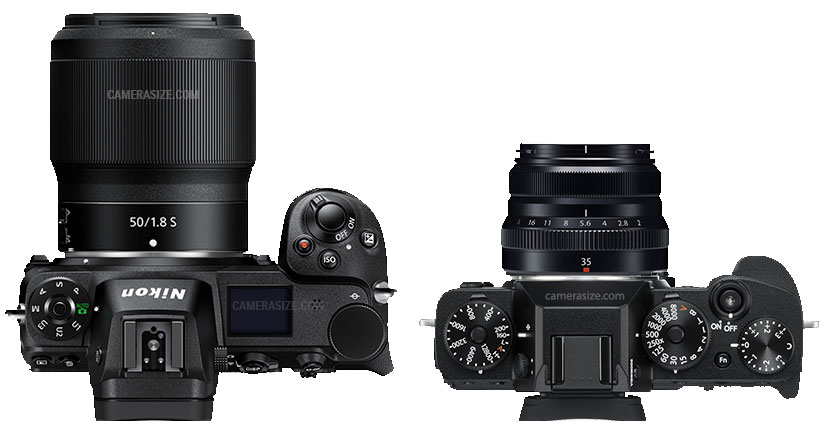
In some cases, the extra light-gathering capability of the larger Full Frame lens lends itself to superior image quality. But not always.
Shallow Depth of Field
One of the benefits of Full Frame cameras is background-blurring shallow depth-of-field. However, Full Frame’s depth of field can be so shallow that you will often be forced to use smaller apertures to keep things in focus. But the more you dial down the aperture, the more you reduce your sensor’s supply of light.

For instance, I typically shoot landscapes at F5.6 with my Micro Four Thirds camera. But with Full Frame, I’m more likely to shoot at F11. Thus, my four-times larger Full Frame sensor is now behind a smaller aperture that’s four times darker.
Therefore, the Full Frame and Micro Four Thirds cameras now receive the same light per exposure, resulting in comparable image quality. And in these circumstances, with image quality equal being equal, you might as well be using a smaller, cheaper camera.
Yet none of this says that Full Frame cameras are not worth it. On the contrary, Full Frame is advantageous if you shoot portraits, Astro, or any other photography that thrives on large, bright, and shallow apertures. Alternatively, you might prefer to photograph static scenes using a tripod, thus giving your Full Frame camera all the time it needs to saturate its sensor regardless of aperture.
Cost
Full Frame cameras are much cheaper than they used to be, but the same cannot be said for lenses. Broadly speaking, Full Frame lenses come in three flavors.
First is the cheap variable aperture zoom lens that often comes with the camera. Unfortunately, these cheap lenses suffer poor optics and slow dark apertures that will diminish the benefits of owning a Full Frame Camera. Then there are exotic primes and Pro-grade F2.8 zooms. These lenses are hugely expensive, very heavy, and optically wonderful.
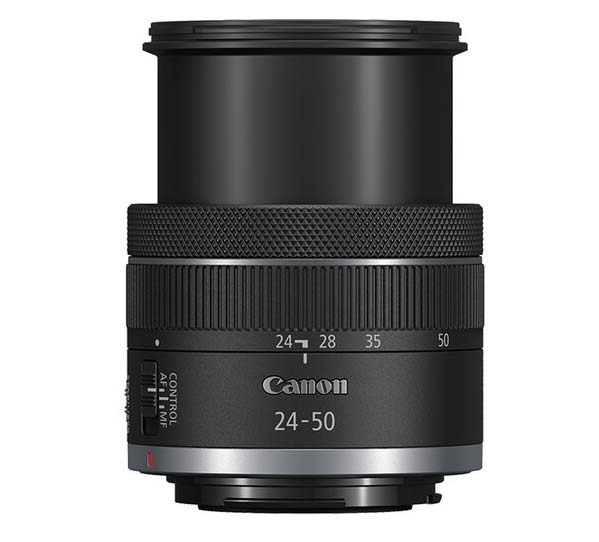
Finally, there’s the middle ground of affordable F1.8 primes and F4 zooms. These lenses serve as a happy medium delivering very good image quality in a smaller, more affordable package.
However, many of these F4 zooms are more expensive than their Micro Four Thirds F2.8 equivalents and tend to be larger, less well-built, and with fewer features. And since an F4 lens is half as bright as an F2.8 lens, the Full Frame advantage is cut to just one stop.
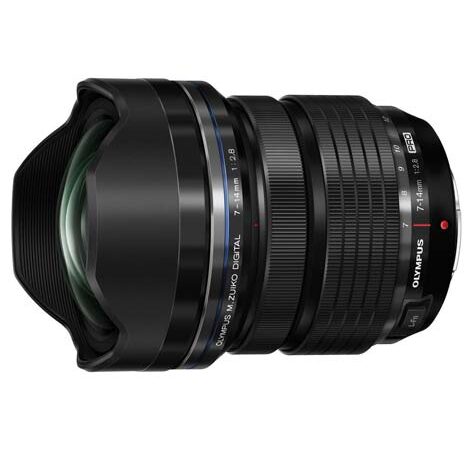
Again, this is not to say a Full Frame camera is not for you. However, to get the best out of Full Frame, you have to be willing to pay good money for heavy lenses.
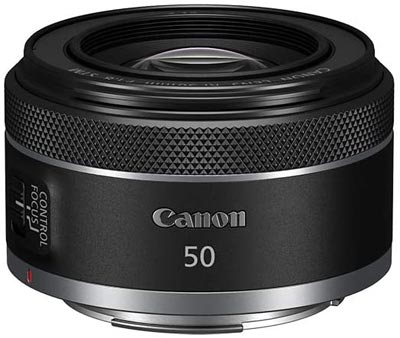
That being said, there are exceptions. For instance, small primes such as the Canon RF 50mm F1.8 are affordable and crazy sharp. But if you prefer compact high-quality zooms, Full Frame may not be for you.
Are Full Frame Cameras better?
Full Frame cameras potentially offer better image quality and superior background blur compared to APS-C and Micro Four Thirds cameras. But whether you can exploit these advantages is another matter.
Depth of Field
Full Frame depth of field is a double-edged sword. On the one hand, Full Frame cameras have the means to blur backgrounds to oblivion, resulting in attractive bokeh and outstanding subject separation.
But if you need more of the scene in focus, you must dial-in smaller and darker apertures, ultimately nullifying Full Frame’s 4-times larger, 4-times brighter advantage.
Therefore, the benefits of a Full Frame camera largely depend on whether you shoot at large apertures. For instance, Full Frame cameras are ideal for portraiture, and many sports since your subject’s background is often an inconvenience best blurred away.
But if you need both your foreground and background in focus, you’ll need to reach for a smaller and darker aperture, thus potentially throwing away the advantage you’ve paid for.
Cost
But whether you benefit from a Full Frame camera at all depends on your level of investment. In financial terms, this means buying large, bright, optically wonderful lenses that provide the light and image quality your Full Frame camera deserves.
However, such lenses are large, heavy, and expensive. Alternatively, you could buy a cheaper, lighter lens, but there’s little sense in hiding a large, bright sensor behind cheap, dark optics.
The alternative is to bury a smaller sensor behind large, bright optics. Doing so would likely result in a smaller, more affordable camera system. And if your photography demands extended depth of field, you’re likely to enjoy, for the most part, comparable image quality.
Get Discounts on Photo Editing Software
Subscribe to my weekly newsletter and be notified of deals and discounts on photography software from ON1, Adobe, Luminar, and more. Spam Promise: Just one email a week, and there’s an unsubscribe link on every email.
Conclusion
Full Frame cameras offer superior image quality compared to cameras with APS-C and Micro Four Thirds sensors. However, this advantage can only be fulfilled if you shoot with the best lenses using larger apertures or a tripod.
But if your photography is tripod-free, demands extended depth-of-field, or you’re unwilling to fund or carry the best lenses, you’re likely better off with APS-C or Micro Four Thirds.
Shop Full Frame Cameras






